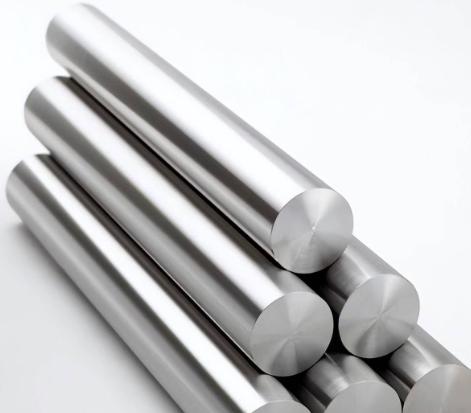I. Guardian in extreme environments

Inside the engine of a civil airliner flying at an altitude of 10,000 meters, the GH4169 high-temperature alloy is being roasted by flames at 1,600°C. The single crystal structure formed by the directional solidification technology of this nickel-based alloy allows the turbine blades to maintain structural stability in an extreme environment equivalent to 60% of the surface temperature of the sun. Each Boeing 787 engine requires more than 3 tons of such special steel, and its grain arrangement accuracy reaches the micron level, ensuring that the centrifugal force per square centimeter is equivalent to that of a family car.
In the field of deep-sea oil and gas extraction,
duplex stainless steel 2205 builds the steel Great Wall of submarine pipelines. At a depth of 3,000 meters on the seabed, this alloy containing 22% chromium and 5% nickel can resist high-pressure seawater corrosion and withstand drastic temperature fluctuations from -196°C to 300°C with its two-phase microstructure. After using this material, the service life of the Norwegian National Petroleum Corporation's submarine Christmas tree device was extended from 15 years to 40 years, and the maintenance cost was reduced by 70%.
The pressure vessels of nuclear power plants use SA508-III special steel, whose fracture toughness value reaches 280MPa·m¹/², which is 8 times that of ordinary construction steel. The pressure vessel of the "Hualong One" nuclear reactor manufactured by Shanghai Electric has a wall thickness of 300mm but can ensure dimensional stability throughout its life cycle. The secret lies in the precisely controlled ratio of vanadium and molybdenum trace elements.
2. The cornerstone of precision manufacturing
In the field of medical devices, 316LVM medical stainless steel is rewriting the history of surgery. After electrolytic polishing, the surface roughness of this ultra-low carbon (<0.03%) martensitic stainless steel reaches Ra<0.1μm, which is 800 times thinner than a human hair. After using this material in Johnson & Johnson's artificial joints, the wear rate is reduced to 0.01mm per year, making the service life of the prosthesis exceed the 30-year mark.
In the microelectronics manufacturing workshop, Invar steel plays the role of "time and space guardian" of chip lithography. This iron-based alloy containing 36% nickel has a thermal expansion coefficient of less than 1.5×10⁻⁶/℃ in the range of -50℃ to 100℃, ensuring that the mirror components of the EUV lithography machine remain stable at the nanoscale. The positioning accuracy of ASML's latest generation of lithography machines reaches 0.1 nanometers, which is equivalent to controlling the error within the diameter of a hair over the length of a football field.
The EA4T axle steel used in high-speed rail wheelsets controls the oxygen content below 8ppm through ultra-pure smelting technology. The CL65 steel grade independently developed by China has a fatigue strength of 580MPa, enabling the Fuxing EMU to achieve a breakthrough of 1.2 million kilometers without replacing wheelsets. The control of non-metallic inclusions at the microscopic level of this material is equivalent to removing all impurity particles larger than 0.5 mm in a standard swimming pool.
3. The innovative frontier of future materials
In the field of liquid metals, zirconium-based amorphous alloys are breaking through the limits of traditional metals. This amorphous material, obtained by cooling at a million degrees per second, has a strength of 3GPa while maintaining an elastic strain of 2%. The hinge assembly of the mobile phone developed by Liquidmetal in the United States still maintains a mirror-like finish after 200,000 folding tests.
In terms of gradient functional materials, the "super 9% nickel steel" developed by JFE Steel of Japan has a 7-layer gradient structure design, which increases the impact toughness of LNG storage tanks at low temperatures of -196°C by 300%. The nickel content of each layer of this material gradually changes from 5% to 12%, forming a stress buffer structure similar to the pearl layer of shells.
In the field of smart materials, shape memory alloy Nitinol is opening a new era of self-healing structures. The phase transition temperature of this nickel-titanium alloy can be precisely controlled within the range of ±1°C. NASA uses it for the automatic deployment mechanism of the solar panels of the Mars rover, which can still restore the preset shape in an extremely cold environment of -120°C.
From deep-sea probes to Mars rovers, from quantum computers to artificial hearts, the evolution of special steels is essentially the history of human struggle to break through physical limits. When materials scientists adjust the arrangement of atoms under an electron microscope, they are writing a new chapter in human civilization. In the future, with the integration of the Materials Genome Project and 3D printing technology, special steels will break through the boundaries of traditional metallurgy, customize the "life code" of materials at the nanoscale, and continue to support human exploration of more extreme application scenarios.

